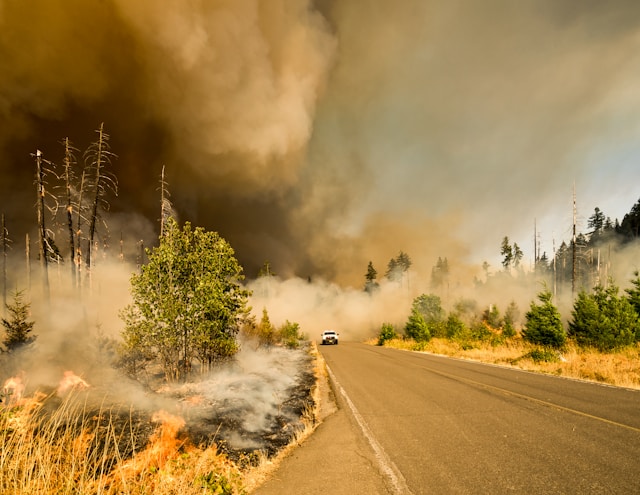
Matt Doll, Minnesota Environmental Partnership
As May ends, all of Minnesota is now getting a taste of what the Arrowhead region has already experienced this season: a reddened sun and an ashy scent on the wind as vast acres of trees burn. This weekend, we’re experiencing our first statewide smoke event of the season.
This round of smoke comes to us courtesy of vast wildfires in southern Canada, a product of historically hot, dry conditions. It’s expected to stick around until at least Monday night, making spending time outside unhealthy for sensitive groups in most of the state and dangerous for everyone in parts of the Northland.
Most Minnesotans can likely remember a time, recently, in fact, before “wildfire season” made red-tinted views and choking particulates a part of every summer. These fires are visible evidence that our planet is getting hotter. Warmer temperatures cause greater water evaporation, which dries out forests, which leaves them extremely vulnerable to flame.
Like so many of our environmental challenges, this one is a product of human choices: we’ve continued to use far too many fossil fuels, leading to a greenhouse effect that intensifies both droughts and highly damaging storms.
So what can be done about it?
At the federal level, the current Congress is moving towards slowing down action to curb climate emissions, not speeding it up. The Trump-backed spending bill that recently passed the US House would significantly reduce tax credits and incentives for the clean energy transition, including programs that MinnPost reports have brought $1 billion in investments to Minnesota.
Some clean energy companies are already scaling back operations around the country, cancelling over $14 billion in projects due to the uncertainty created by the federal targeting of clean energy credits. That’s bad news for our efforts to reduce emissions and curb drought, and it’s also bad for job growth and the economies of most US states – red, blue, and in between.
Meanwhile, Congress is also advancing a bipartisan “Fix Our Forests Act,” which would boost federal support and coordination for various fire management techniques, but also removes many restrictions on logging and reduces public participation in forestry decisions. Groups in the environmental community, including MEP members, have varying views on this legislation. MEP has not taken a formal position, but we remain concerned about any attempt to roll back environmental safeguards or sound scientific decision making.
Meanwhile, the Minnesota Legislature is expected to finally finish its two-year budget this week in a special session, with sweeping budget cuts across the board looking all but certain. That includes clean transportation, which is especially disappointing given that the transportation sector is Minnesota’s number one source of greenhouse gas emissions and one major cause of air pollution that the state can tackle directly.
Even without looking at the climate impacts and resulting wildfires, transportation is among the worst offenders when it comes to air quality. Cars and trucks are a major source of ground-level ozone and particulate matter, both of which contribute to heart and lung diseases and other conditions. The impact of these pollutants falls especially heavily in low-income communities and communities of color, which are often located near highways and busy roads.
The Legislature has taken significant steps forward on clean transportation in recent years. While it contemplated serious cuts to public transit, rail projects, and other clean transportation policies this session, most of those cuts will likely not pass this session. However, it does appear likely that the Legislature will double registration fees for plug-in electric vehicles to $150, which, along with the proposed federal EV fee of $250 in the reconciliation bill, will send a chilling message on purchases of zero-emission vehicles.
As Minnesotans cough on smoke or spend this weekend indoors, many will no doubt wonder what their government can do to combat “smoke season.” We hope that our state and federal lawmakers will look out the window, take a deep breath, and consider the consequences of sitting around while the climate warms and our forests burn.